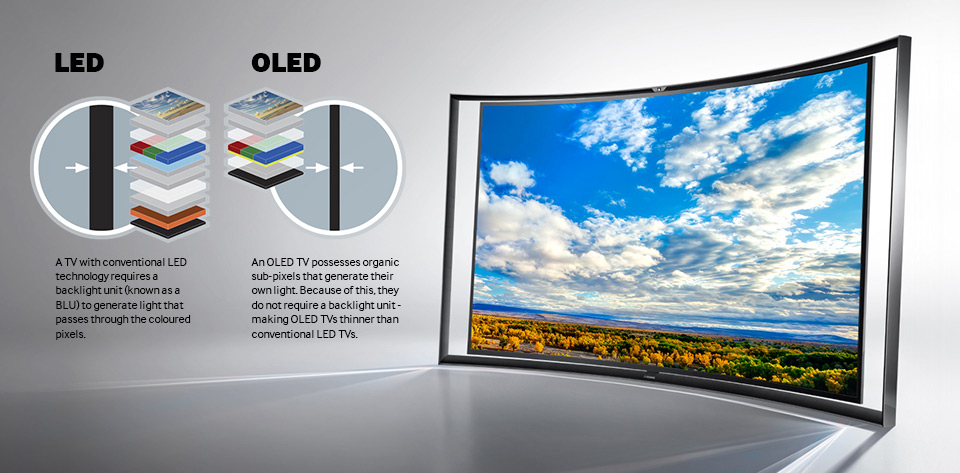- 01.21.2015
- gramophone
- Tech"knowledge"y Guest Post
OLED: What it is and Why You're Going to Want it (eventually)

By Geoffrey Morrison
One of the most exciting and best-reviewed technologies to emerge in 2013 was OLED, or Organic Light Emitting Diode, a technology used in smartphones, small displays, and now televisions. OLED is a completely new way of making TVs, with significant benefits. Like anything, though, there are drawbacks too.
Using a mixture of chemicals that glow a certain color when you energize them, OLED displays can be exceptionally thin and light. Because you can vary the amount of energy each pixel, or picture element, receives, you can get an exceptional black level (a true dark black, not the dark gray of most modern TVs). They’re also bright, and energy efficient. When it comes to picture quality, already OLED is beyond what's possible with the established LED, LCD and plasma televisions.

So what’s not to like? Well, cost, certainly. OLED TVs, right now, are exceptionally expensive. This is true with any new technology, of course, so with any luck, prices will come down quickly. One of the other problems with OLED, historically, has been longevity. As in, they don’t last as long as other display types. The companies producing OLED claim this has been worked out, but only time will tell.
Will your next TV be OLED? If you are a cost-no-object, early adopter kind of person, it may be. But for most people, they’re still very expensive. But their picture quality is exceptional, so as they drop in price (and go up in screen size), OLED TVs will be worth a look. Hopefully that will be soon.
